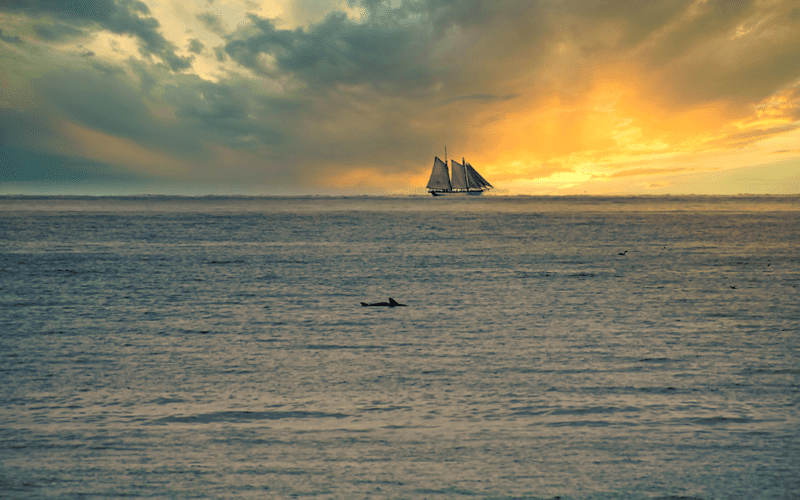
There was a time not too long ago when I was a head magician of the local branch of the cult of celestial navigation; a cult that experienced its last hurrah through the early 1990s, before going underground with the emergence of GPS. During a relatively short period of time, there were various branches throughout the country, all practicing the art. My particular cabal was located in the northeastern U.S.
I was pledged into this group, serving my apprenticeship with Eben Whitcomb, master of the schooner Harvey Gamage and celestial navigation wizard nonpareil. Along with others, I was wizard-in-training for a number of years, and for a short period of time, by default, I too held the title of wizard of celestial navigation. Despite my title, my raiments did not include conical hat or flowing robes; they were far more quotidian.
Our Delphi, if you will, was Harvey Gamage: commodious, resilient, a fine sea boat, with enough room below in the main saloon to accommodate at least two dozen acolytes. It is there I would gather the devoted, usually about 20 each voyage; twice yearly, back and forth to the Caribbean via Bermuda.
Each leg of the voyage was booked by novitiates of all different demographics; doctors, lawyers, educators, young, old, men, women, desirous of nothing more than to be initiated into the cult. I was in the exalted position of transmitting a text that had been passed down for generations, sifting through copious columns of complicated numbers and navigating the eager students through the rocky shoals of spherical trigonometry. “Ho Mo To,” I would whisper. “Ho Mo To,” my voice rising louder and louder. “Ho Mo To!” I would shout, as if possessed, my arms and head thrown back, veins bulging, raising the somnambulists from their stupor.
Early in each session, we would open the sacred Arc; the mahogany box, buffed with an aged patina, cradling the tool of veneration upon which the whole cult was constructed. A beautiful object was revealed, beyond compare. An icon — the Plath sextant.
To a chorus of Ooohs and Aahs and cries of “we are not worthy,” hands reached out to caress the sacred object. I would gently lift the relic from its velvet cushion, passing it around the room with the famous call and response of “Got it?”
At that moment we bonded in pagan fellowship, knowing it was only a matter of time before we would carry the sextant up on deck, in preparation for taking our first observation at sea—or in the language of the cult, “taking a shot.” A heady time experienced by all.
Excitement built to a crescendo of revelation, if not always understanding. Those were the days of heady power; followed as I was by aspirants, desirous of my knowledge, both a Merlin and a Zen master, full of cryptic advice, “Look to the declination.” Or: “What is the V correction?” Life was good.
Alas, those days are long gone, the cult since grown out of favor, replaced by a new cult of electronic button-pushing. We all have moved on. But I admit, there are still times, on days when the sun is high, the sky cloudless, when the horizon is distant, that I reach for the sextant, taking it gently from its box, and in a manner both ancient and new, place the eyepiece to my eye lowering the sun to the horizon. “Mark!” I cry aloud. “Mark!” n
David Berson writes the Navigation Problem in regular issues of Ocean Navigator, teaches celestial navigation, plays the guitar and co-owns and operates the electric launch Glory in Greenport, NY.

